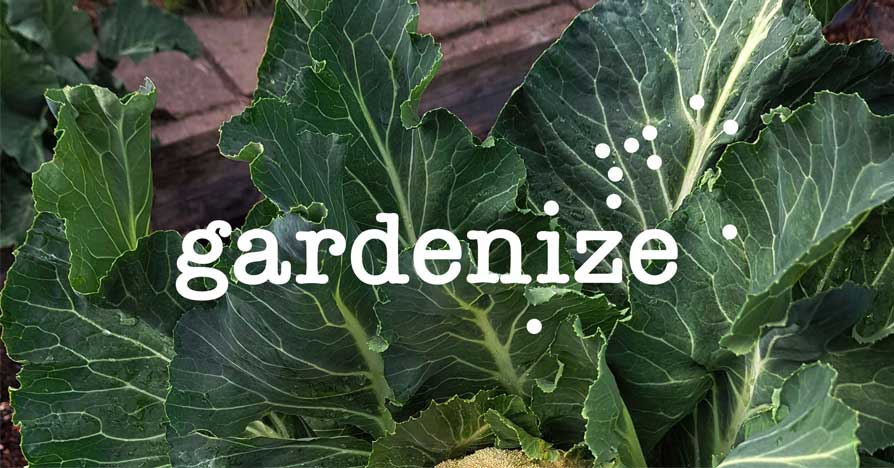THE ENGLISH GARDEN
What do you think of when you think of an English garden? Is it the “typical” cottage garden with its colourful mixture of flowering plants? Or is it the formal Elizabethan knot garden or even the sweeping landscapes of Capability Brown? You may be thinking of recreating the English garden in your own garden. What is the best way to do it, and which model should you follow?
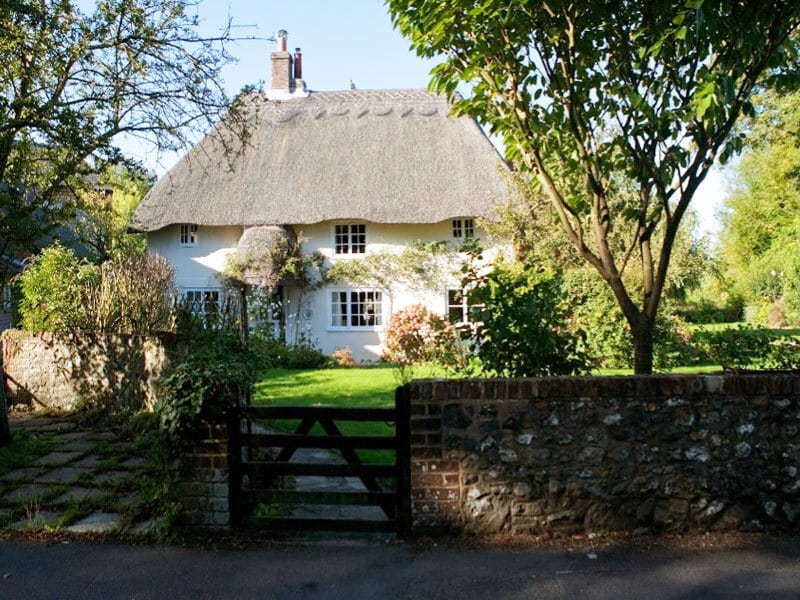
WHAT IS AN ENGLISH GARDEN?
First of all, what exactly is an English garden?
This is a very difficult question to answer, because, in fact, a number of different types of garden can be placed under that heading. And everyone will have their own ideas about what an English garden looks like. Moreover, there have been so many other influences on English gardens that it’s hard to define a purely English style. So, I am going to talk about three types of garden that are thought of as typically English: the Tudor garden (in particular the knot garden), the landscape garden and the cottage garden.
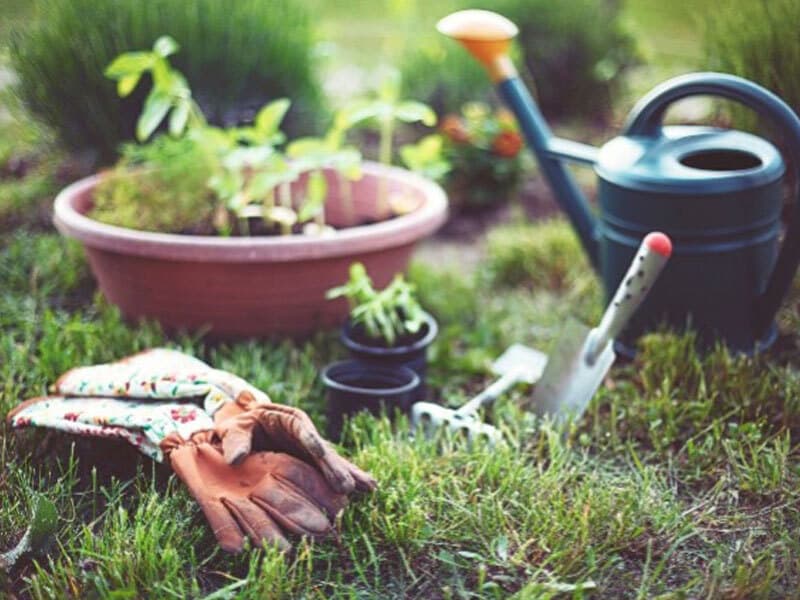
TUDOR GARDENS
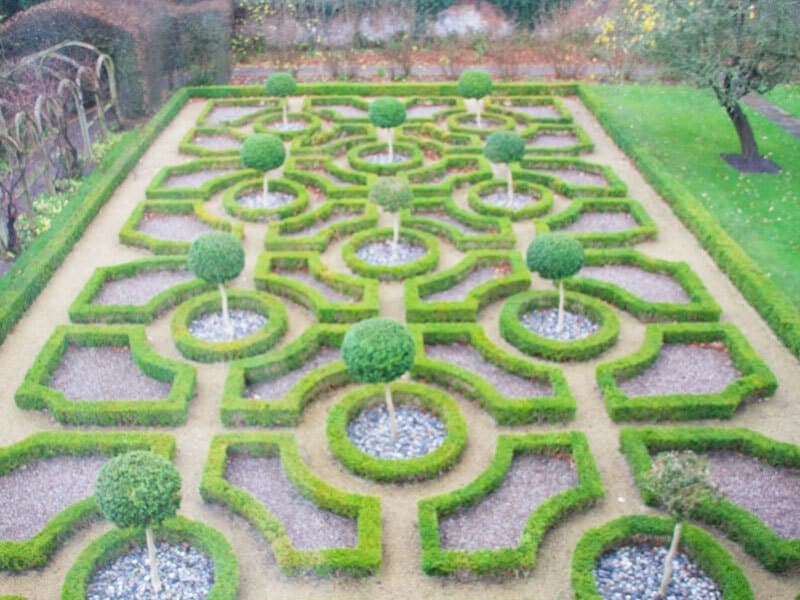
Knot garden at Moseley Old Hall, Staffordshire
Photograph by Mike Peel (www.mikepeel.net).
Gardening as a leisure activity in England dates back to the time of the Tudor Monarchy (1485-1603). Of course, people in England had always gardened in the sense of cultivating the ground and growing plants, but it was during this relatively prosperous and peaceful period in England’s history that the designing of gardens for leisure and the growing of ornamental plants became popular. But here we’re talking here mainly about the wealthy (usually the aristocracy and landed gentry). Poorer people grew mainly what was useful for food or for medicine, and this did not change.
One type of garden that developed during the Tudor period was the knot garden. The knot garden was a peculiarly English design, even though, in some respects, it resembled the French “parterre” which came later. It is said to have been inspired by Renaissance tapestry, wall covering and textile designs and consisted of elaborate patterns of hedges within a square design which formed the “knot”. It has also been suggested that it showed elements of Celtic design. A popular design was the ‘quartered’ garden of four knots, with each square containing a pattern.
Knot gardens could be either closed or open: closed knots were patterns of hedges so interwoven that there were no paths into the centre, whereas an open knot allowed access to the centre.
Knot gardens often, but not always, contained beds of herbs and flowers. Sometimes the hedges would contain coloured gravel or crushed brick, and gravel was also used for the paths. The hedges originally consisted of aromatic herbs such as rosemary, thyme, santolina or teucrium, but later box was used. Trees (apart from fruit trees) were gradually banished beyond the outskirts of the garden.
The gardens of the wealthy in Tudor times were intended for entertainment and as such were designed to impress. They often contained architectural features such as banqueting pavilions, arbours, fountains, wooden galleries, statues and carved seats, and larger gardens might contain a mount, an artificial hill with a winding path up to it so that visitors could look down onto the garden and out to the open country. A recreated example of this can be seen at Kenilworth Castle in Warwickshire:

Recreating the Tudor Garden
How do you recreate the Tudor garden (in particular the knot garden) in your own garden?
First of all, it may be difficult to faithfully copy a Tudor garden. The designs themselves are complicated to reproduce and keeping the garden under control (which involves regularly clipping hedges and keeping them in shape) can be both time consuming and expensive.
However, it would be possible to create a small, fairly simple knot and to use this as a framework for growing herbs and other plants that would have been common during the 15th and 16th centuries. Many of these are aromatic plants, which was another feature of Tudor gardens: they used plants that would release their scent when they were plucked or brushed against when people walked through the garden.
You could even fill in the spaces between the knots with coloured gravel, as the Tudors often did and perhaps add a fountain or arbour or some other hard feature. Fruit trees that were grown during the period, such as pears, cherries and medlars, could be planted around the perimeter of the garden.
Examples of plants used by the early Tudors are lavender, rosemary, thyme, hyssop, teucrium, winter savory, marjoram, violets, foxgloves, roses, lilies and carnations.
Later on, during the reign of Queen Elizabeth 1, in particular, overseas exploration and trade increased. Plant hunters brought back plants, seeds and bulbs from the Americas and other countries, and the acquisition of these plants became a status symbol for those who bought them.
To find out more about the kinds of plants grown by the Tudors, refer to John Gerard’s Herballor General Historie of Plantes, first published in 1597.
The main qualities to aim for in a Tudor garden are control and symmetry. Below is a picture of a modern roof garden that has incorporated some of the elements of a knot garden into its design, showing that the idea of a knot garden can be applied to the smallest and most unusual of spaces:
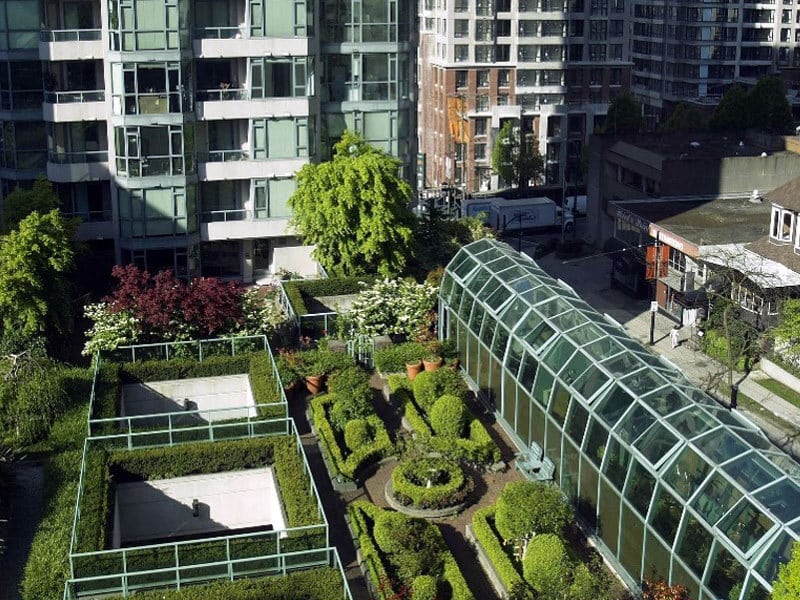
Sadly, no original Tudor gardens survive today, but there are recreations at Kenilworth Castle, Hardwick Hall, Moseley Old Hall and Lyveden New Build.
THE LANDSCAPE GARDEN
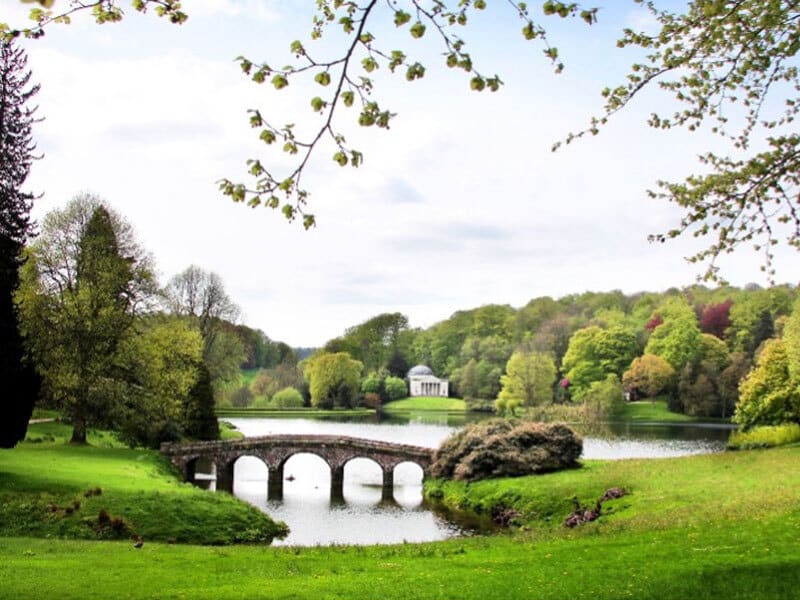
Stourhead Park, Wiltshire
Perhaps the gardening style that the English are most famous for is the landscape garden. This is a style which evolved during the eighteenth century in England and spread across Europe, replacing the formal styles of French and Dutch gardens which had previously been fashionable. It presented an idealised view of nature and is said to have drawn inspiration from artists such as Claude Lorrain. Claude portrayed a vision of landscapes in Italy during Classical times and the English nobility would have been familiar with these if they had taken part in a “Grand Tour”.
Landscape gardens were usually centred around a country house and consisted of broad, sweeping parkland dotted with clumps of trees. They were designed for eighteenth century leisure pursuits, such as hunting, shooting and carriage riding, and often featured a lake in a serpentine shape. Very often streams would be dammed to create the lake so that, although the whole effect was designed to look natural, it was, in fact, very carefully engineered.
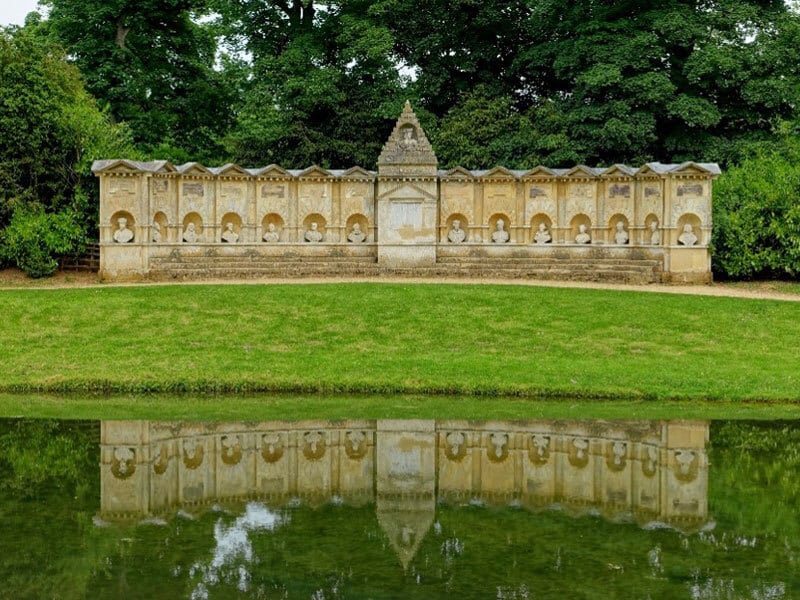
Temple of the Worthies, Stowe Park, Buckinghamshire
As well as natural features such as trees, park and lakes, gardens of this period often contained architectural features such as follies, bridges, statues, temples, and grottoes. These were often inspired by Classical or Gothic architecture or had historical, political or literary significance, such as the Temple of the Worthies in Stowe Park, where there are busts of monarchs, warriors, statesmen, artists, philosophers and scientists.
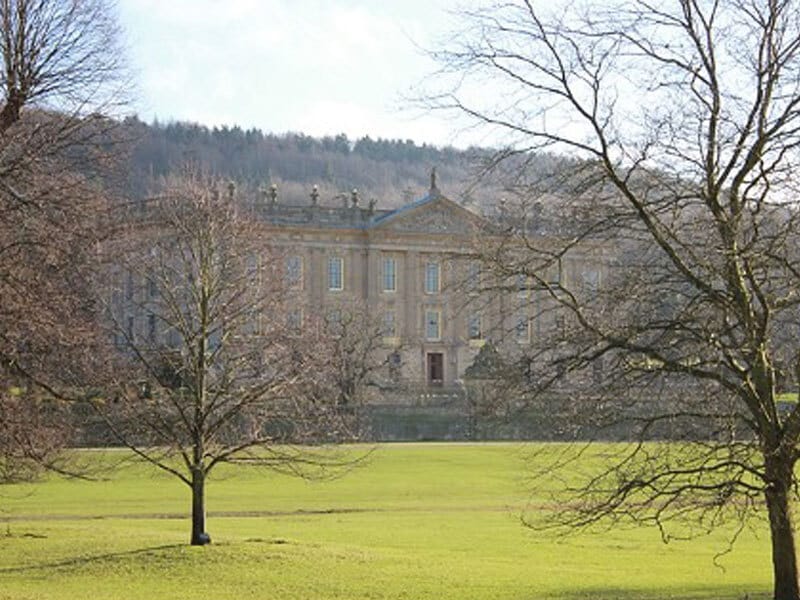
Chatsworth House, Derbyshire
Possibly the best known of the English landscape designers was Lancelot (Capability) Brown (1716-1783), so called because of his knack for assessing the “capabilities of nature”. At Chatsworth House in Derbyshire he was responsible for landscaping the estate of the Duke of Devonshire.
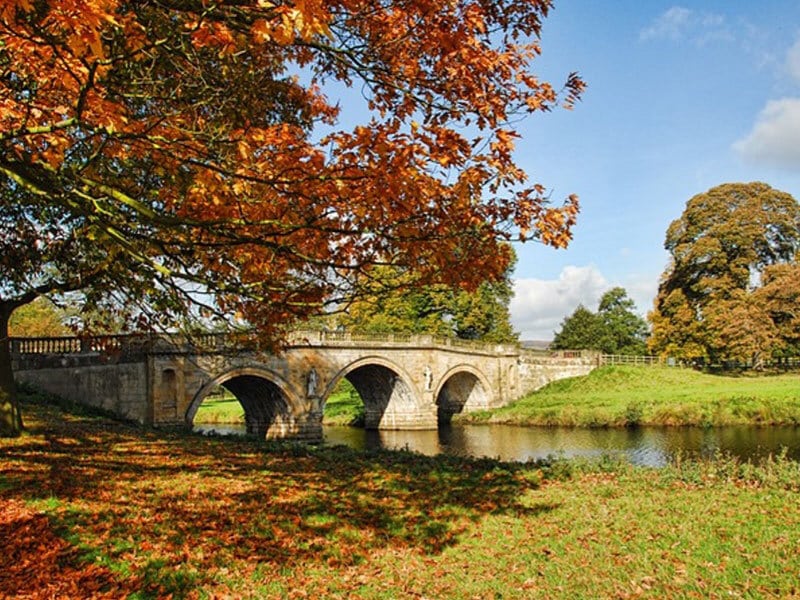
Chatsworth: three arched bridge constructed to carry the drive created by Capability Brown
At Chatsworth a whole village (Edensor) was demolished, and vast earthworks carried out so that there was an uninterrupted view of the parkland and surrounding hills from the house. In addition, the river was straightened, and many trees were planted at a cost of around £40,000 at the time. Landscape gardens were large scale and expensive.

Der Englische Garten, Munich
Influence of the English landscape garden
The English landscape garden had an influence on many parks and gardens not only in England but also overseas in countries such as Russia (Pavlovsk Palace) and Germany (Der Englische Garten in Munich). Continental European “English gardens” tended to be designed on a smaller scale and are usually found on the edge of cities, rather than in the middle of a rolling landscape. They often lack the sweeping vistas of parkland and water set against a woodland background of English landscape gardens, but do include “eyecatchers” such as temples, grottoes, bridges, statues, and fake ruins.
Recreating the English landscape garden
It has to be said that it would be difficult to recreate a landscape garden unless you were fortunate enough to have acres of land and a great deal of money. On a smaller scale it might be possible to include elements of a landscape garden. Perhaps, if you live in open countryside, you could open out the end of the garden so as to create a vista, framed by clumps of trees. To achieve the natural look, these could be native trees, rather than exotic specimens from other countries. Flowering plants have no place in a landscape garden, but water features, such as a lake or a pond could be included. Paths should be well-worn and not paved. A garden structure, such as a statue or fake ruin, could also be included. But this is definitely not a style for the average suburban garden!
Where to see English Landscape Gardens
Fortunately there are still a number of landscape gardens that can be visited in England. Notable examples are: Rousham Hall, Stowe, Stourhead, Burghley Park, Blenheim Palace and Croome Court.
COTTAGE GARDENS
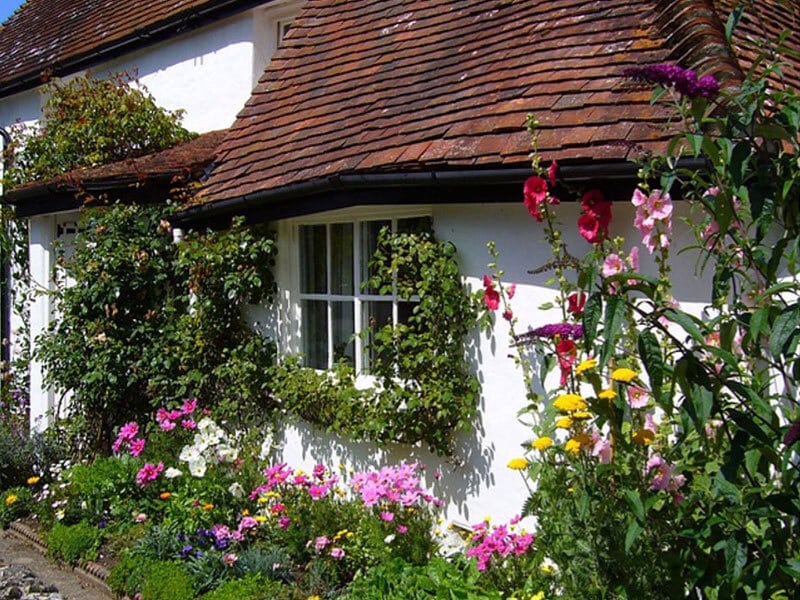
Perhaps the garden that most people think of as typically English is the cottage garden. It is, in fact, very hard to define, as cottage gardens weren’t part of any movement or style. These were the gardens of ordinary people, and they had a mainly utilitarian function. Food was grown as well as herbs for medicinal purposes, and flowers, at least at first, only featured if they had a practical use. Animals would be kept, and there might be beehives for a ready source of honey.
The other feature of cottage gardens was that they were unplanned. Plants were grown wherever there was space, so that herbs, vegetables, and flowers all intermingled with each other, and planting was dense. There was a practical reason for this. As the garden writer Margery Fish wrote:
“Close planting conserves moisture and I think many plants are happier when they are grown close to one another. Most of us want gardens that need as little care as possible and plants that can be left to increase slowly without yearly attention. Cottage plants had to look after themselves; otherwise they would not have survived so many years of casual treatment”. This is advice that we could perhaps follow today!
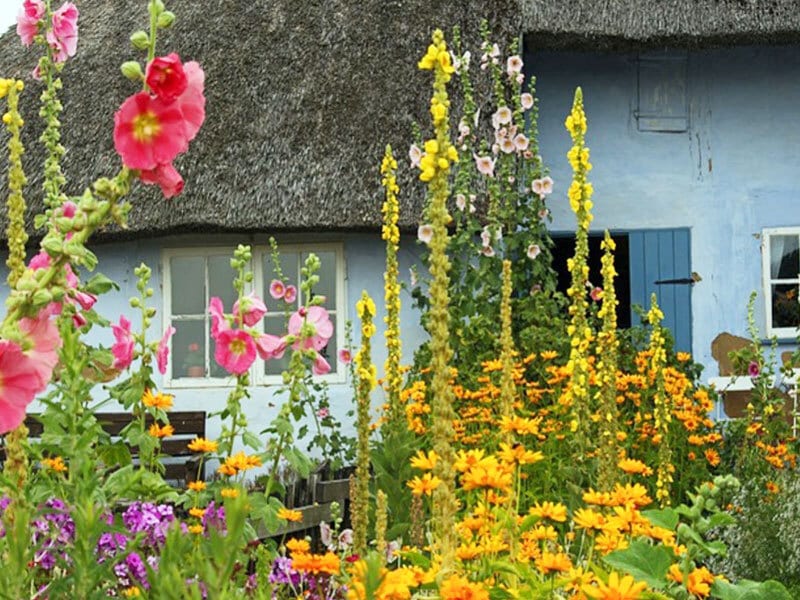
Plants and seeds would be exchanged with neighbours, rather than bought, but occasionally new varieties of plants would escape from the gardens of the wealthy. As time went on, flowering plants started to be grown for their beauty rather than just to be useful.
Popularity of the Cottage Garden
The idea of the romantic cottage garden really developed in the 19th Century. The gardening writer, William Robinson, advocated the “wild garden”(in contrast to the formal bedding schemes popular during the Victorian area), where plants were placed in areas where they would thrive and in their natural settings as far as possible. Gertrude Jekyll drew inspiration from cottage gardens, although, as informal as her gardens may seem, the colours were carefully planned to give a feeling of harmony.
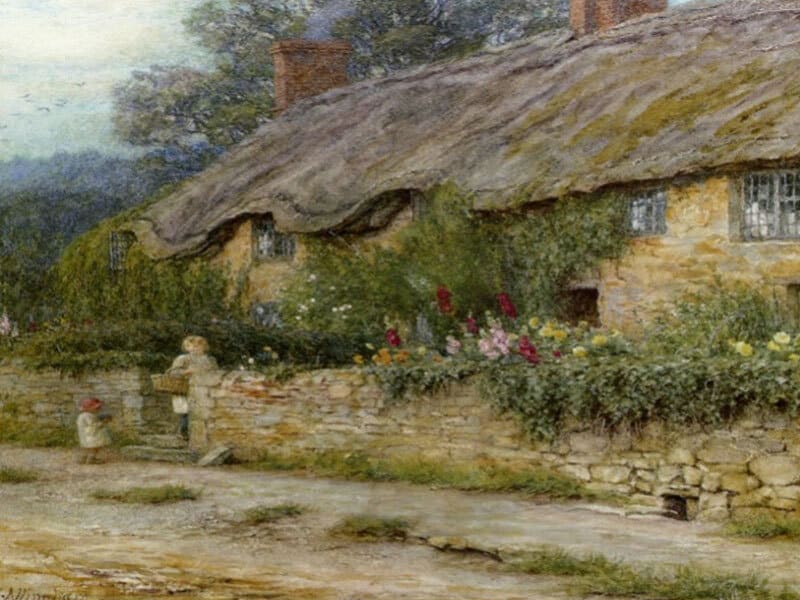
Helen Alllingham “A Mother and Child Entering a Cottage”
Artists like Helen Allingham and Miles Birket-Foster painted pictures of idealised cottage gardens which contributed to the idea that many people have of them today.
How to create a cottage garden
Do you need to live in a cottage to create a cottage garden?
Whilst a thatched cottage covered in roses and honeysuckle seems like the ideal place for a cottage garden, it’s possible to achieve some of the effect wherever you live by planning your layout and using the right plants. Cottage gardens tended to be small and, as many people today have smaller gardens, the cottage garden style can be quite suitable.
There’s nothing formal about a cottage garden, so winding paths and irregularly shaped beds are appropriate. The right planting is important. Typical cottage garden plants include:
- Hollyhocks
- Aquilegias
- Delphiniums
- Foxgloves
- Old fashioned roses
- Honeysuckle
- Clematis
- Campanulas
- Dianthus
- Lavender
As well as perennials, annuals (particularly those that seed themselves, like cornflowers, calendulas and poppies) can be grown.
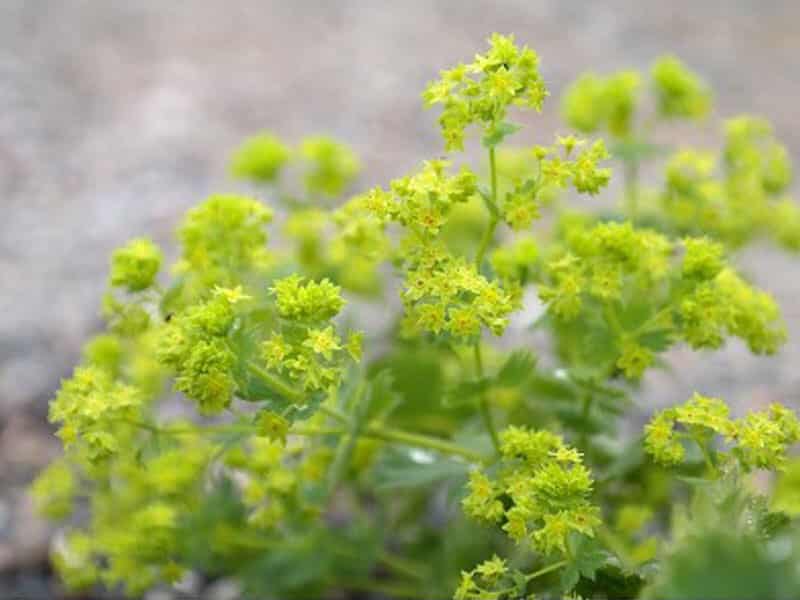
Alchemilla mollis
Plants can billow over the edges of paths and grow over walls to blur hard edges. Suitable plants for this effect are nepeta, lavender and Alchemilla mollis.
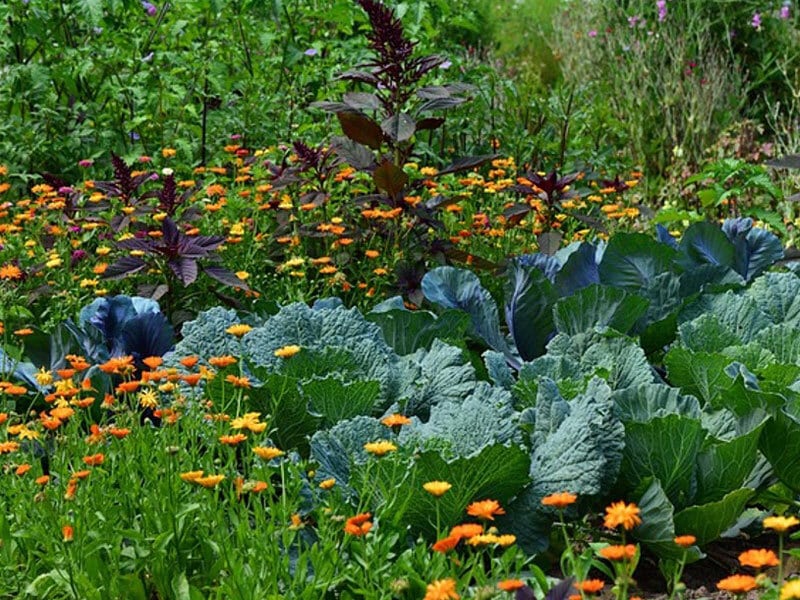
You could, of course, copy the old cottagers and grow vegetables such as lettuces, peas, beans and cabbages amongst your flowering plants, as well as planting fruit trees and bushes.
Where to see cottage gardens
Few cottages seen in the English countryside today are older than the sixteenth century. Most gardens will have been modified over the years and it is, therefore, almost impossible to find a cottage garden with its original design and plantings.
There have been some reconstructions, such as that at Shakespeare’s birthplace in Stratford-upon-Avon and the nearby Anne Hathaway’s cottage. There is also one at Thomas Hardy’s birthplace in Dorset and at Margery Fish’s garden at East Lambrook Manor in Somerset, where she took elements of the cottage garden and combined them with contemporary plants to create her own style.

Ann Hathaway’s cottage, near Stratford-upon-Avon
WHERE TO SEE ENGLISH GARDENS
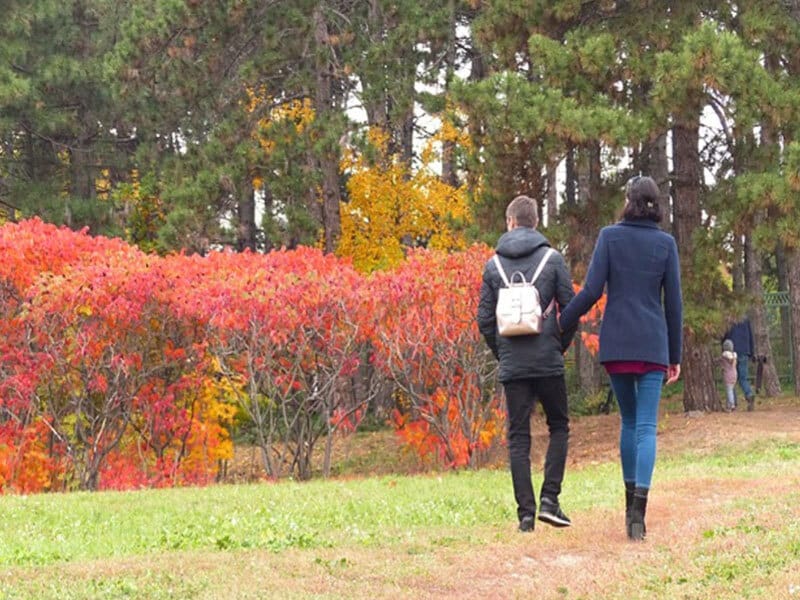
As well as being a nation of keen gardeners, the English are also renowned for their love of visiting gardens – not just those belonging to stately homes or public bodies, but also private gardens, often designed and looked after by people who would not even call themselves gardening experts. Every year, as part of the National Gardens Scheme, these gardens open for charity all over the country, and provide an opportunity to see English gardens, in various styles and at different times of the year, at their very best. The owners often provide refreshments and there are usually plants on sale.
If you can’t visit in person, the NGS website has a number of “virtual” tours you can take for a small fee. If you want inspiration for ways of creating your own English garden, this is a very good place to start.
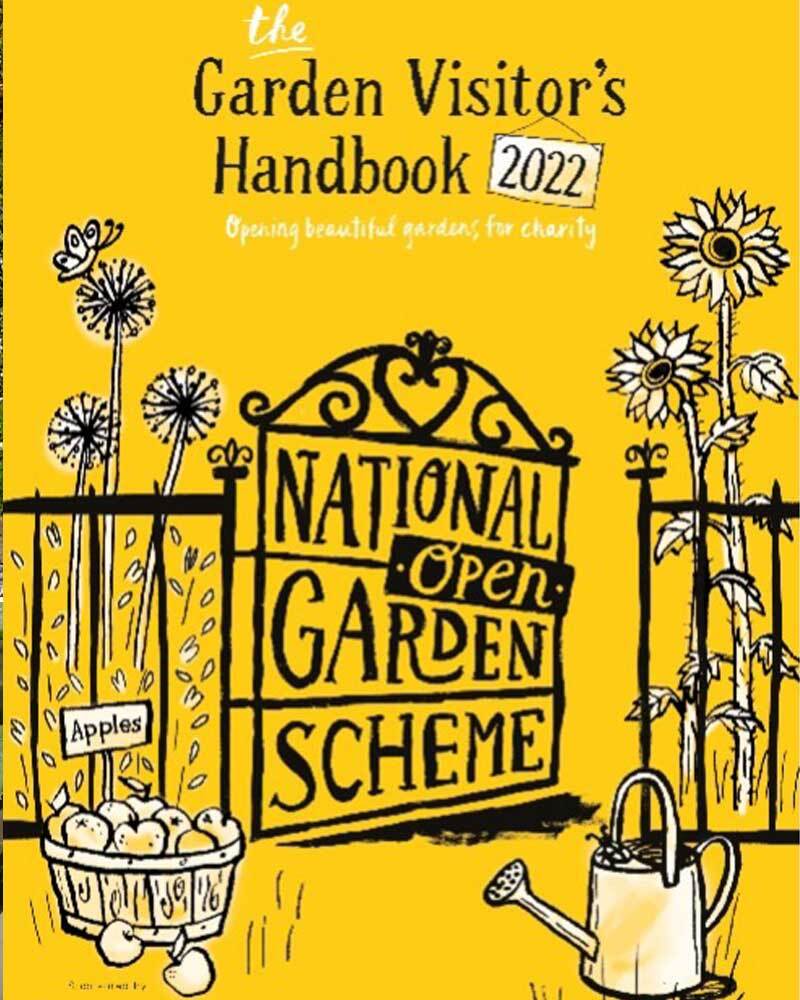

ABOUT THE AUTHOR
Caroline Bowman has been hooked on gardening ever since she grew some thyme from seed and planted it in a window box when she lived in a flat in London. Fifty years later she is still hooked on gardening, but now she lives in Lincolnshire in England where they have quite a big suburban garden as well as an allotment, where they grow fruit and vegetables. Caroline loves flowering plants, in particular, herbaceous perennials and she likes finding out about the more unusual varieties that will do well in the English climate and soil.
GARDENIZE GARDEN APP
A gardening friend with a green thumb and photographic memory
Gardenize is an app for gardening and cultivation that helps you to overview, understand and develop your garden and your gardening skills. Order makes it easier to succeed and Gardenize structures information and photos and makes it searchable for you. You also get tips and inspiration from other Gardenizers around the world. Gardenize is free to use and you can download Gardenize from the App Store or Google Play, or create an account for the Gardenize web app for web browsers.
Get to know Gardenize better here.

